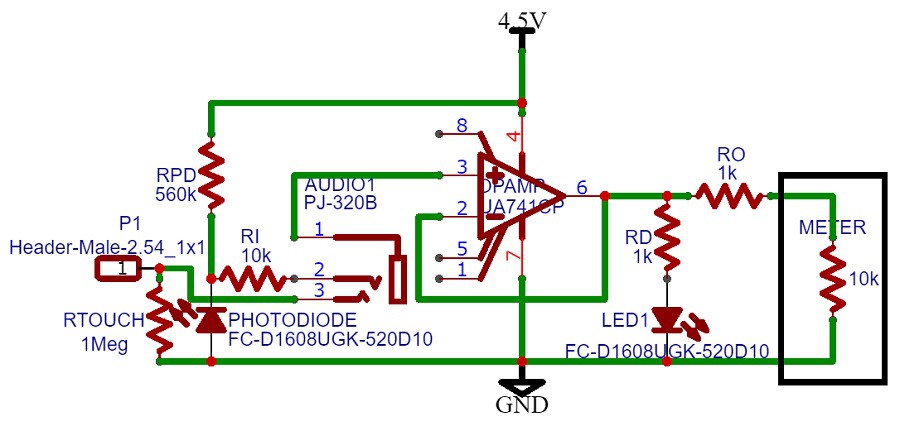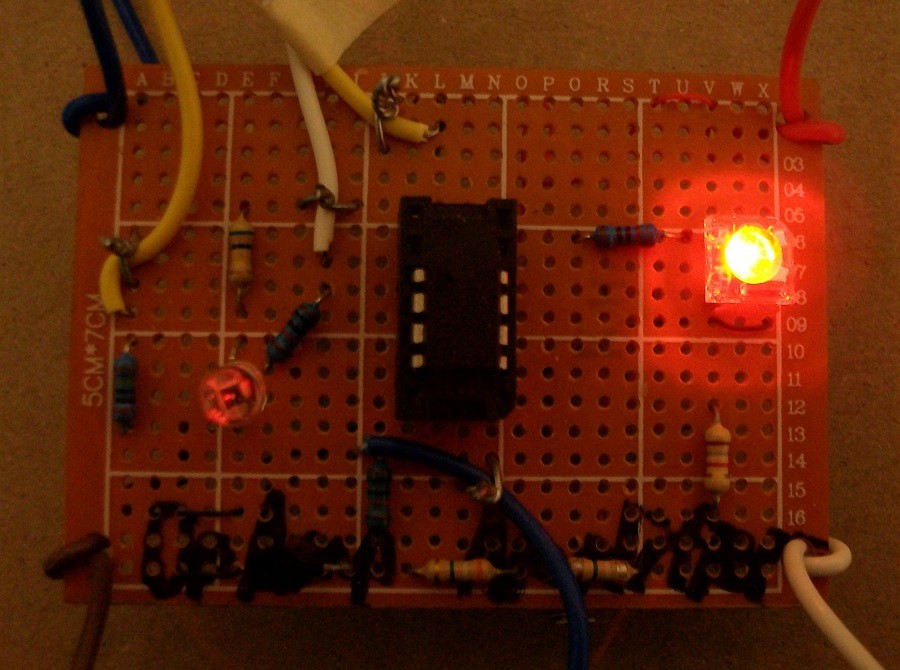If you know a bit about electronics than you must have seen non-inverting and inverting operational amplifier circuits. This article shows how versatile simple op-amp voltage follower can be.
You can implement this circuit with transistors if you do not have an access to an operational amplifier IC and wire wrap sockets:
https://www.instructables.com/id/Transistor-Sensor-Amplifier/
https://www.instructables.com/id/Recycled-Transistor-Amplifier/
You can see the circuit working in the videos:
Light Motion Sensor and Light Detector
Touch LED
Infra-red Receiver/Remote Control Tester
Frequency LED 1
Frequency LED 2
In the video you see that op-amp saturation voltage would not allow the LED to turn OFF. The minimum supply voltage must be 4.5 V. However, I used a 6 V power source.
Step 1: Design the Circuit
This circuit does not waste any resistor on feedback. An op-amp with zero resistance feedback does not need capacitors and has a high frequency bandwidth. A high resistor feedback will also limit the circuit applications. However, this circuit can only amplify current source inputs and does not amplify voltage sources.
I drawn the circuit in https://easyeda.com online simulation and PCB design software.

The Ro resistor is used for short circuit protection to prevent op-amp failure. Ri is used to protect the photo-diode from short circuits because op-amp input wire can be connected to power source or the photo-diode circuit output can be accidentally grounded. In both of those instances the photo-diode will fail, unless a 10 kohm resistor is placed in series (shown in the circuit diagram). A similar circuit was implemented for the infra-red receiver. Rtouch resistor is used prevent op-amp saturation due to disconnected inputs for the touch sensor. I connected to oscillator directly to the op-amp input. Than means that negative voltage was entering the op-amp.
Step 2: Make the Circuit
I used the well known LM741, 8 pin op-amp. However, I did not have an 8 pin wire wrap socket in stock. I used wire wrap tool and a bit of soldering. The black transistor looking component at the bottom is actually an infra-red photo-diode. The normal light photo-diode is on the right of the circuit.

The yellow wire with a masking tape is connected to op-amp positive input terminal. The white wire is connected photo sensor circuit output. The blue wire at the bottom of the photo is connected to infra-red sensor circuit output. The blue wire at the top left corner was connected to signal generator and the other end to op-amp input (the yellow wire with masking tape). The yellow wire is touch sensor circuit output. You might not need to bias the op-amp input wit the Rtouch 1 Megohm resistor if the LED is OFF. I tried touching with one finger and two fingers (the other finger connected to power supply). The circuit worked with one finger when Rtouch was disconnected.
 Super Circuits
Super Circuits
Discussions
Become a Hackaday.io Member
Create an account to leave a comment. Already have an account? Log In.